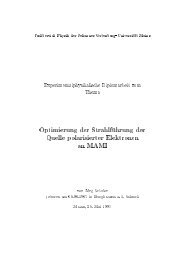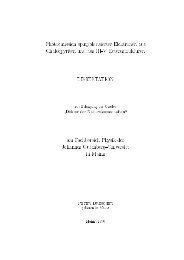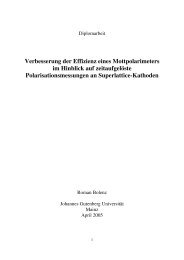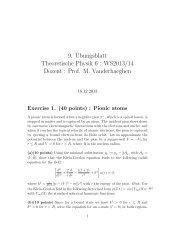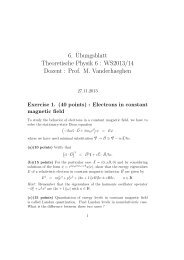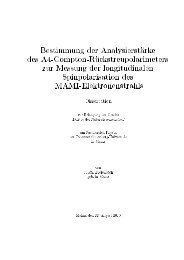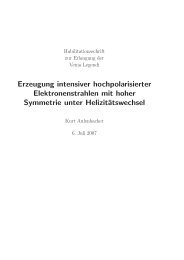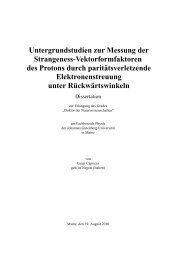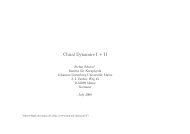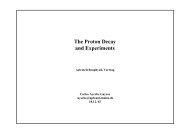EFFECTIVE FIELD THEORIES FOR VECTOR PARTICLES AND ...
EFFECTIVE FIELD THEORIES FOR VECTOR PARTICLES AND ...
EFFECTIVE FIELD THEORIES FOR VECTOR PARTICLES AND ...
Create successful ePaper yourself
Turn your PDF publications into a flip-book with our unique Google optimized e-Paper software.
4.2 the free tensor model 33<br />
The Hamiltonian density reads via Legendre transformation<br />
H 1 = Π 0j Ẇ 0j + Π i j Ẇ i j − L<br />
= ϕ 1 0jz 0j + 1<br />
8a Π i jΠ i j + 2c(W 0j W 0j − W i j W i j )<br />
+ 2b(∂ i W 0i ∂ j W 0j − ∂ k W 0j ∂ k W 0j + ∂ k W i j ∂ k W i j<br />
(4.20)<br />
− ∂ i W ik ∂ j W jk + ∂ i W ki ∂ j W jk + ∂ i W ik ∂ j W k j<br />
− ∂ i W ki ∂ j W k j ) ,<br />
where again three to be determined functions were introduced and the<br />
constraints in equation (4.18) were identified.<br />
The following Poisson brackets are calculated as usual, except for<br />
the fact that an integration by parts is carried out with respect to the<br />
integral of the Hamiltonian function H 1 = ∫ d 3 xH 1 if necessary. From<br />
the conservation in time one obtains<br />
{ϕ 1 0l , H 1} = 4b∂ l ∂ i W 0i − 4b∂ k ∂ k W 0l + 4cW 0l + ∂ n Π nl − ∂ n Π ln<br />
≡ ϕ 2 0l ≈ 0 . (4.21)<br />
At this point the convention in use shall be stressed again, e.g. it holds for<br />
l = 1 that ∑ n



